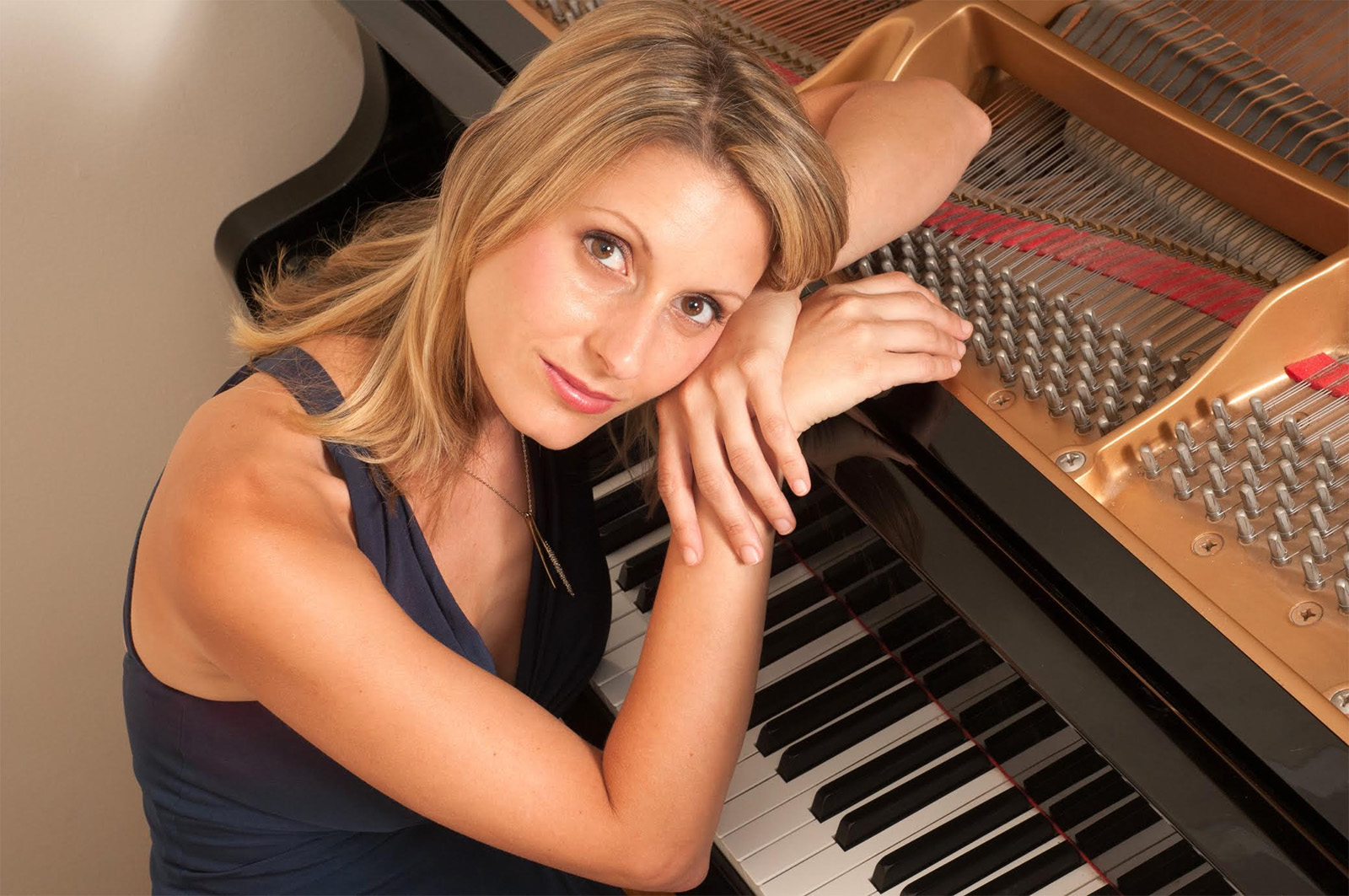Piano trio to perform unique take on traditional tango for Fowler Out Loud

Valerie Stern, a pianist for Trio Escarlata, will perform “Cuatro Estaciones Portenas” (“The Four Seasons of Buenos Aires”) at the Fowler Museum at UCLA during the Fowler Out Loud show Wednesday. (Courtesy of Carli Jo Bidlingmaier)
Fowler Out Loud: Trio Escarlata
Wednesday, 7 p.m.
Fowler Museum
Free
By Alexsandra Coltun Schneider
Feb. 19, 2019 10:40 p.m.
People usually associate tango music with uptightness and strictness, but two members of Trio Escarlata said the ensemble will use classical instruments to convey passion.
Trio Escarlata – a piano trio composed of UCLA graduate students Killian Kelly, Valerie Stern and Priyanka Venkatesh – will perform Wednesday at the Fowler Museum at UCLA. One of the songs the group covers is “Cuatro Estaciones Portenas (The Four Seasons of Buenos Aires),” by Argentine composer Astor Piazzolla. Kelly said traditionalists didn’t consider Piazzolla’s music to be tango at the time of its creation because of its fast and feisty nature. Despite its distinct qualities, however, Venkatesh said Piazzolla’s music still can be included in the genre because it contains a hallmark tango rhythm. As a classical performance group, Trio Escarlata will break the boundaries of the traditional tango music from its school courses by using its instruments to convey the four seasons along with sensuality, Venkatesh said.
“(The instruments are) more intensified and dramatic than in music such as Beethoven or Bach,” Kelly said. “We get a little grittier and dirtier in the sound – it’s not all neat and proper like what people are used to … (and) there’s a lot of room to be a little messy and dark.”
The name Trio Escarlata, which translates to “Scarlet Trio”, was chosen by violinist Venkatesh. The name is a nod to the association of the color red with sensuality and the tango music genre because of its evocative nature. Venkatesh said the colorful harmonies within the music can be associated with a fantasy because of its free-flowing rhythmic freedom.
“Tango is all about love and passion,” Venkatesh said. “It’s like a sensory overload in a good way.”
Kelly said the provocative nature of Piazzolla’s works made them controversial at the time of their creation in the twentieth century. Purists didn’t consider Piazzolla’s music to be tango, Venkatesh said. But Piazzolla turned the previously slow and sultry tango into something fast-paced and thrilling, creating a gratifying sensation in the audience, Kelly said.
[Related: Students connect with others through the tradition of tango]
Venkatesh said many associate classical music with strict, rigid structures. But the structure of the music performed by the piano trio is different because there is room for creativity and freedom for each instrument, Kelly said. Pianist Stern said Piazzolla’s musical piece needed some transformation in order to be played by Trio Escarlata’s piano trio instead of a traditional group. This is because the music was originally performed by different instruments, such as a bass, and not necessarily those in a piano trio, Venkatesh said.
The four movements in “Cuatro Estaciones Portenas” – “Invierno”, “Otono”, “Verano” and “Primavera” – are meant to represent each season of the year. “Cuatro Estaciones Portenas” starts with the summer season and continues in a chronological order. Each season has different rhythmic aspects, Venkatesh said. For summer, Venkatesh said there are instrumental imitations of the summertime sound of crickets. In Piazzolla’s portion of winter, Venkatesh said high piano notes and short, percussive sounds give an icy feeling. The music for spring is rhythmically buoyant and upbeat, which Venkatesh said can be associated with the season.
Musicology lecturer Benjamin Court, who first met Kelly and Stern as students in his course, Music 204: “Music Bibliography for Performers,” witnessed the group perform Piazzolla’s composition in person. Court said audiences have the potential to hear how Trio Escarlata is not a typical tango ensemble because their rhythmic groove and musical feel is different from traditional types of music. The piano trio interprets the musical piece in its own way, which can be heard in its harmonies and how its rhythmically diverse sound strays from classical traditions, Court said.
“You can really hear the voice of the instruments so clearly … (There is) energy and passion that goes into it, which you may not typically hear in contemporaneous classical types of pieces,” Court said.

